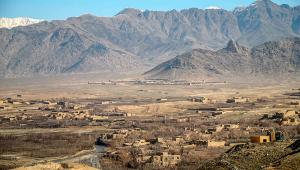The deep recession afflicting Brazil is the primary cause of the contraction. The IMF thinks its economy, the largest in South America, declined by 3.8% in 2015. It is expected to contract again by 3.5% this year, leading to an estimated 0.3% contraction across the whole region in both 2015 and 2016.
In a Latin America-focused presentation of the fund’s recently released World Economic Outlook, the IMF noted the region has had a rough start to 2016 with financial volatility, the slowdown in China, low commodity prices and the increase in interest rates in the United States weighing on the region’s economies.
But in a blog post published today, Alejandro Werner, director of the IMF’s Western Hemisphere Department, noted that the regional recession “masks the fact that most countries continue to grow, modestly but surely”, with each country’s outlook determined by the interplay between external shocks and domestic fundamentals.
“While countries with strong policy frameworks have been adjusting to external shocks smoothly, countries with weaker domestic fundamentals are experiencing significant downturns,” he said.
Werner said that the region would probably have seen low positive growth if the Brazilian economy had been healthier. However, slow domestic adjustment to external conditions, the wide-reaching corruption scandal and further political problems have “paralysed investment and dominated the economic outlook” in Brazil.
Werner added that unemployment has risen sharply, inflation is in double digits and “political dysfunction continues to delay the adoption of a credible fiscal strategy to keep public debt on a sustainable path”.
Greater certainty around the political situation, policy and how Brazil will go about consolidating its public finances would be beneficial, Werner added.
In Venezuela, Werner highlighted the “longstanding policy distortions and fiscal imbalances” that preceded the collapse in oil prices and were exacerbated by them. Oil accounts for the vast majority of Venezuela’s export earnings.
The IMF expects Venezuela to suffer the third worst fall in oil output in the world, of almost 18% over 2015 and 2016. Prices in the country have continued to “spiral out of control”, Werner noted, with inflation predicted to hit 720% this year, up from 2015’s rate of 275%, which was already the word’s highest. The resulting shortages of essential goods, including food, are “exacting a tragic toll”, he added.
The fund also forecasts that both Argentina and Ecuador will slide into recession this year. Werner said the trade shocks related to low commodity prices “are not enough to explain the severity of contraction” and that domestic conditions are also influencing projections.
On the other hand, in Chile, Columbia and Peru Werner said the fund sees a “normal adjustment” to external shocks and sound policies and measures to stave off contraction. All three economies are expected to grow moderately. Growth also remains strong in Bolivia but risks from rising public debt and current account deficit remain, Werner warned.
Unlike South America, Mexico, Central America and the Caribbean have benefitted from the strong US economy or falls in commodity prices, and the regions are projected to see growth over 2015 and 2016.
Risks to the outlook include a stronger-than-expected slowdown in China, further declines in commodity prices or deterioration of the situation in Brazil, and delays to private investment, Werner said.







